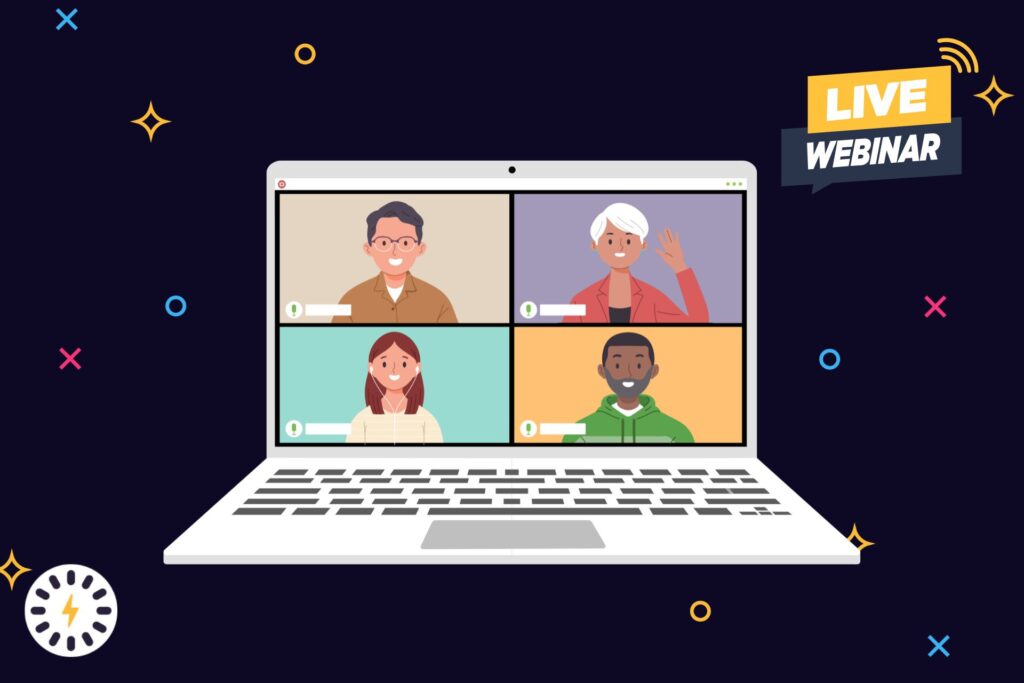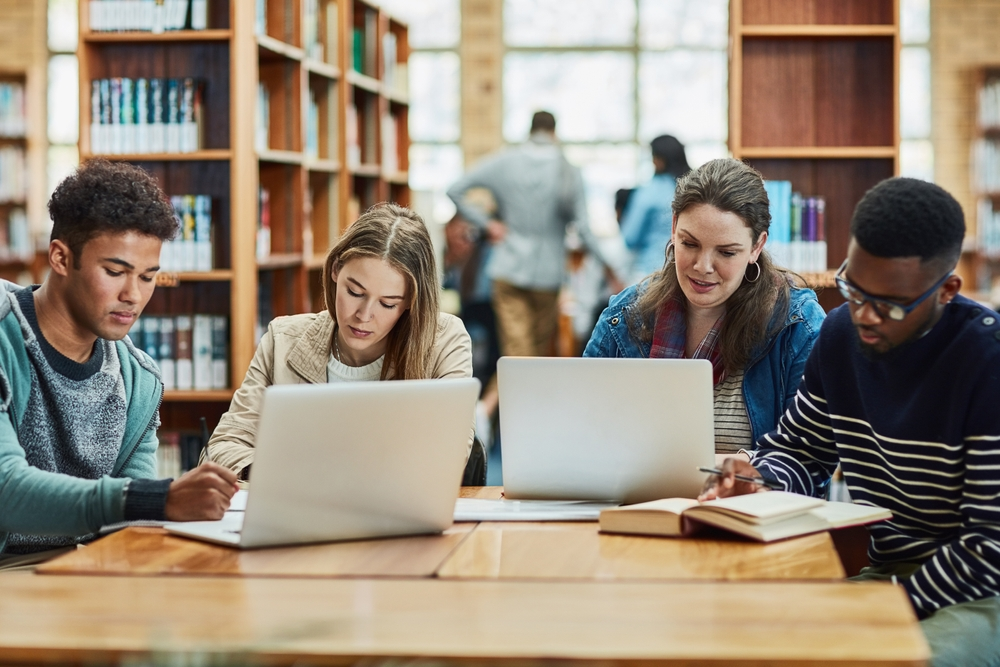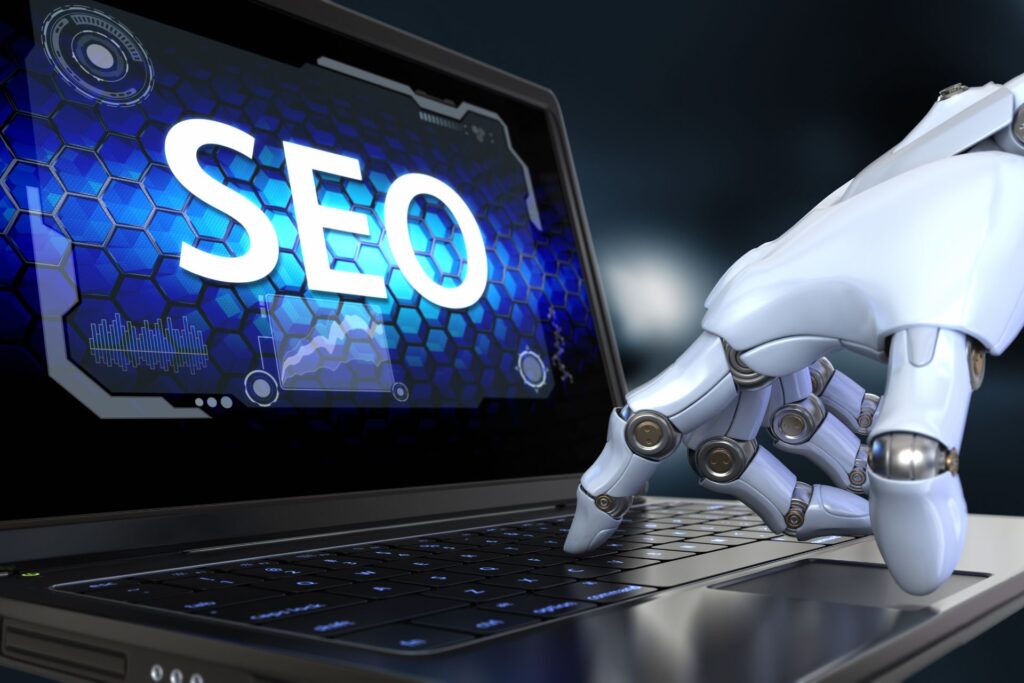"The best place to hide a dead body is on page 2 of Google... Nobody ever goes there."
You just launched your website and have a blog? You have already read a dozen articles on the SEO referencingBut are you still confused when it comes to implementing this strategy?
The SEO writing is one of the most effective methods for maximize your chances of increasing traffic to your website.
The equation is simple:
The more your site is positioned on keywords (= the target queries that your potential visitors type in the Google search bar), the higher the site will appear in the search results (and on the famous first page).
Now,
1 page (or blog post) = 1 optimized target query + a set of keywords from the associated lexical field.
So, having a blog, allows to :
- Create relevant content related to your expertise and with value for your users
- Position yourself on the keywords that your visitors/prospects/customers type into the search engines to find your content and that of your competitors.
If you want to improve your search engine rankings organically (= without paying) and achieve steady growth, then blogging is your best bet. By multiplying relevant contents, you indicate to Google and its companions that you have a particular expertise on a subject and that you are dynamic. However, to be effective and allow you to move up in the search results, your articles must be well written, well structured and optimized for SEO. This strategy requires time, effort and technique.
In this article, we accompany you step by step in your learning process by explaining our main techniques and tips for writing a blog post :
- with high added value
- well structured
- optimized for search engines
First, we will define together what precisely is meant bySEO optimization. From this perspective, we will develop for you the interests and benefits to improve the SEO of your blog posts. It is only once these aspects are clarified that we will detail our best techniques and practical tips for good SEO.
In this article, you will learn:
- what is SEO and search engine optimization
- the interests and benefits to improve the SEO of your blog posts
- our best techniques and tips for good SEO
The goal is to accompany you every step of the way, so that you can finally have the keys to write an SEO optimized article that, while improving your ranking on Google, will offer value to your readers. Enjoy your reading!
What is SEO?

Search engine optimization (SEO) is a practice that consists of optimize the content of your web page with the aim of getting it to the top of the list of search engines such as Google.
Search by keyword is one of the main ways to discover content online, which is why a good ranking on these search engines ensures an increase in traffic on your website.
For example, when you type in your search engine "how to write an optimized blog post?", you will get results giving you specific advice to help you write your articles more efficiently. Google (and other search engines), organizes content by relevance and by quality. Search engines work with Algorithms that dive into the content of your pages to determine their relevance and thus offer users the most qualitative content possible in relation to their research.

Search engines use many criteria to determine which content deserves to appear in the first results. We recommend you to read this article written by Semrush. The article explains in a relevant and detailed way Google's criteria for a good ranking of your websiteand develops the following criteria in particular:
- The quality of the content
- The length of the content
- Updating content
- The structuring of contents
- Outbound links
- The number of backlinks
- The quality of backlinks
- Site speed and SEO
Why optimize your blog posts for SEO?
If you've ever written a blog post, you're aware of the time and work involved. Between the subject research, information gathering and the editorial staffThe production of an article can sometimes take hours.
Therefore, if your article does not receive the expected traffic you may feel frustrated or even discouraged. All that effort to write an article, which ultimately gets very little engagement, is definitely a disappointing experience.
Your work deserves to be appreciated, so it's time to review your content strategy under the microscope. Writing content for your readers is good, write quality content for your readers AND for search enginesit's better !
Keep in mind thata content with high added value and which deals with an issue multiplies its chances to be shared massively on social media, d'attracting quality backlinks and to be positioned in the first results of search engines in the long term.
Here are the significant advantages of SEO copywriting for your website :
- A increase in brand awareness thanks to a better referencing on search engines such as Google
- A considerable increase in traffic to your web pages
- A improved visibility of your content
- A qualitative audience and more focused
- A rate oftenfold commitment
Writing a relevant and optimized SEO article is a powerful marketing strategy and free which will allow you to strengthen the image of your website and so you stand out from your competition in the long term.
Let's be honest, this SEO strategy will not give you magical and immediate results. Your rigor and your regularity should be rewarded in the coming months, so arm yourself with patience !
The 8 must-have techniques for writing a good SEO article
It is important to note that SEO copywriting is not an exact science and there are countless factors to take into account. On the other hand, some technical points are essential when writing an SEO article.
Step 1: Keyword research
The keyword search is a first step which consists in analyzing the keywords for for which a site is referenced, the keywords for which your competitors are already positioned and the other keywords that your potential readers are looking for.
This research allows us to identify existing content that could be improved and new content that could be created.
A good selection of keywords contributes to improve your referencing and to make your efforts profitable.
When researching keywords, it is important to consider two key factors: search volume and keyword difficulty.
- Search volume represents the number of times users have searched for the keyword in question, in a given period. For example, with the Ubersuggest you have the possibility to have a search volume that corresponds to a period of one month, which allows you tohave a clear idea of the trend of your keyword.
- The difficulty (SD) corresponds to the level of competitiveness of the keyword. This key indicator requires special attention because it measures the difficulty of positioning this keyword in relation to the competition. To increase your chances of ranking well, it is therefore important to ensure that the difficulty level of your keyword is neither too high nor too low. To give you a range, thehe SD should ideally be between 30 and 70%.
Below is an example of a search for the keyword 'SEO'. The level of difficulty is 44% with a particularly high volume of research. It is therefore a highly searched keyword with moderate competitionwhich should allow our article to be well ranked.

(Source: Ubersuggest / Search: SEO)
It is also important to know that people on the internet usually use keyword phrases when they want to find more specific information on a particular subject. The choice of a long-tail keyword is a good strategy to use to in case your keyword is too competitive or not enough.
This technique consists of expanding your main keyword, the head of the long tail, with a succession of keywords that are not very competitive and not very sought after, but which together have a chance of ranking in the search engines.
For example, the title of this section consists of the long-tail keyword "Must-have techniques for writing a good SEO article". From a simple search on Googlewe can see that the terms "write a good seo article"The search engine will suggest them, which means that they have a good search volume.

You can also use free tools such as Semrush, Answer The Public or even Google Trend to help you select a effective long tail keyword.

(Source: answerthepublic.com / Search: seo)
Take advantage of Google Autocomplete. This system will provide you with keyword suggestions based on actual user searches. For example, you can type in the Google search bar your keyword and study the first suggestions.

Step 2: The structure of HN securities
Once the potential keywords have been identified, you must write quality content following a rigorous structure.
First of all, make sure you identify the main line of your article. As you probably know, readers read diagonally on the internet. Therefore, your article should be divided into different parts to make it smooth and intuitive to read.
In order to determine the main line of your article and develop your planwe recommend using a visual technique called "theMind Mapping"and which consists of structure and organize ideas using a hierarchical flow chart that links one idea to another. You can implement this technique by hand, or to save time, you can use theMiro online tool.

L'the use of Hn semantic tags is essential for the structure of your SEO article. Once you have defined the titles of your content, you must include your keyword.
Be careful not to over-optimize ! Remember that the goal is towrite content that converts while providing value to your reader.
Here are our tips for optimizing your article titles :
- Remember that for search engines, the higher the information is placed in the content, the more important it is. So make sure your keywords are placed at the beginning of the title.
- To avoid redundancy in titles, you can use long tail keywords. This SEO technique that we explained earlier in this article is particularly effective and consists in enriching the "head" with keywords and expressions related to your theme. The set of keywords used for the long tail must be consistent and the density moderate.
- The title h1 is the main title. It should be concise and descriptive with a keyword ideally located at the beginning of the title.
- The other Hn titles correspond to the subtitles. They help structure the content of your article and make it more visible to search engines. For an SEO article of 1000 words, the h2, h3 and h4 subheadings are generally sufficient.
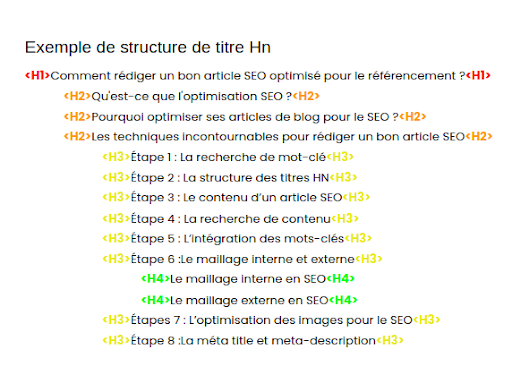
If you want to know more about structuring texts with Hn tags, read the article Title tag: why and how to use it to optimize your web content.
Step 3: The content of an SEO article
Once the structure is established, you have the possibility to work on each part separately. In this step, the content marketing goes into action.
It can be the updating of existing texts or the creation of new content. Google and other search engines place great importance on :
- the quality of the content
- the length of the article
Based on numerous research studies, it is estimated thatThe size of a good SEO article is between 1000 and 2500 words.
BuzzSumo and Moz have joined forces to conduct an analysis of over one million websites. Here is the information they were able to find out about the ideal length of a blog post:
- the first pages of Google contain an average of 1,447 words
- content of more than 1,000 words receives more shares and links than short articles
Generally, a longer article means that the documentation and development of the topic is more in-depth. A consistent article, with sourced data and quality backlinks, allows a website to gain credibility and be better referenced.
It is obvious that in order to develop an idea in depth, mastery of your subject is essential. To do so, strategic and relevant research is necessary. In the following section we explain our method for a good content search.
Step 4: Searching for content
To write a good SEO blog post, information gathering is essential.
In order to guide your search, you must define the needs of your potential reader by asking yourself the following questions:
- What information are people looking for about my topic?
- What information is already available on the internet?
- What new perspectives or answers can I bring to differentiate myself from the content already online?
To be well referenced, you must differentiate yourself from your competitors. How can you do this? By creating value through unique and relevant content.
Here are the right tools for your content search:
- Google search: Simply type in the search engine a question related to your topic and analyze the first 3 results. Take a look at these articles and get inspired by the keywords they are positioned for, their title structures, their content and their lexical fields.

- Ubersuggest: This tool will give you content ideas for your keyword, using examples of articles already referenced for that keyword. Indications on the article such as its monthly organic traffic, incoming and outgoing backlinks and the engagement on the networks it has generated are available.
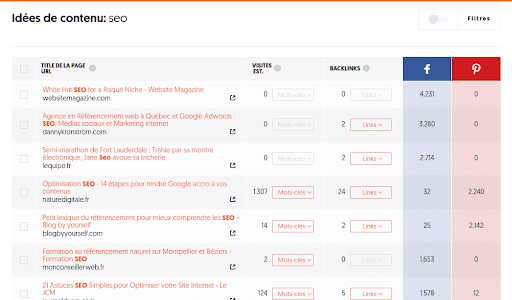
- Social networks : Facebook, Twitter or even Pinterest are a source of information not to be neglected. They are indeed a way to get closer to your niche and determine its needs and requests. For example, don't hesitate to integrate Facebook groups related to your theme, they are full of inspiration to create targeted content that responds to a problem.
There are a number of online tools in addition to those mentioned above: Semrush, Google Trend, Buzzsumo, Answer The public, 1.en etc. It's up to you to find out which ones you prefer to use!
Step 5: Keyword integration
We do not recommend that you place your keyword in every sentence. The parsimony and consistency are to be preferred!
The use ofa field and a well-developed lexical field is the key to naturally optimize your content. The term "semantics" corresponds to the meaning relative to a word, contrary to the lexical field which is a grouping of words that refer to the same idea. For example, the semantic field of the word 'Optimization' would be: strategy, tool, improvement, solution, performance, maximization, etc. However, the lexical field would be: SEO, natural referencing, content, writing, digital marketing, etc.
The research you have done on the topic of your article will allow you to identify a relevant semantic and lexical field.
To gain in productivity, we recommend that you create an excel file to list the semantic and lexical field related to your editorial line. This file, if regularly updated, will allow you to save time when writing your future SEO optimized blog posts.
Tips:
- Your keyword must appear in your main H1 title
- It should also be present in your other H2-H5 titles, but not all of them and in a natural way
- Place your keyword and its synonyms seamlessly throughout your content
- Use questions around your keyword (how, why, etc.)
Step 6: Internal and external networking
In order for you to understand this technique, we will define the following two terms: internal networking and external networkingin other words inbound and outbound links.
The internal link in SEO
This technique is extremely effective for keep the reader on your site longer but also for improve the referencing of your article.
Internal linking consists of integrating links in your content that direct the reader to another article or page of your site. To implement this strategy effectively, ask yourself the following questions:
- As I read my article, what are some potential questions my audience may have and how can I answer them?
- What existing content on my site might interest my reader?
- Which of my articles answers this question in more depth?
- What service on my site is related to what I'm saying here and would be of interest to my audience?
This analysis then allows you to integrate links to direct the reader to some of your articles in a relevant way. Not using this technique is to take the risk of seeing your reader leave your site to find out the missing information by redirecting himself to a competitor's site.
So if here, I recommend you to go and read our (excellent) articles on web writing: 12 essential tools to learn to write in 2022 and how to optimize WordPress: build faster websites with Toolkit for ElementorNot only do I give you SEO relevant resources, but I also link to the rest of our content to keep you coming back to our site!
External linking in SEO
External links are all links leading to another site than the one you are on. It has the direct effect ofimprove the accessibility of a page by linking it to other pages. For example, if another website shares a link to you on its page, it is considered an external link to your site. This is called a backlinksThis is very useful if the site in question has a strong influence. This can indeed help your article to be positioned permanently in search engines, because other sites refer to your content as quality content
Step 7: Optimizing images for SEO
It is said thata picture is worth a thousand wordsand this is particularly the case for referencing !
To begin with, it is important to pay special attention to the quality of your images. Visuals are essential elements to attract and keep your reader on your page. Image banks such as Freepik or Pixabay are available to you free of charge so don't hesitate to use them. You can also consult our article on the top 20 sites to find royalty-free images.
Also ensure that the size of your image corresponds to the size of the image container of your theme. Reducing the weight of an image can indeed improve the loading of your website pages. We recommend that you prefer the following formats: JPG, PNG, GIF.
You can also use an online image compressor, such as IMG2GO which is free and easy to use!
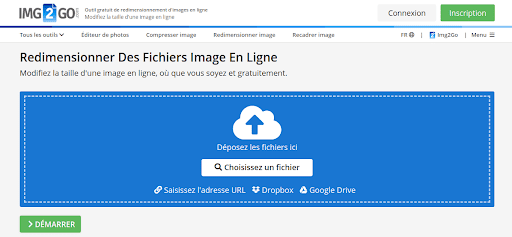
Finally, don't neglect the alternative text (ALT) of your image! This attribute allows you to write a brief description of your image and maximize your chances of appearing in image search engine results. Just enter a few descriptive adjectives with your main keyword.
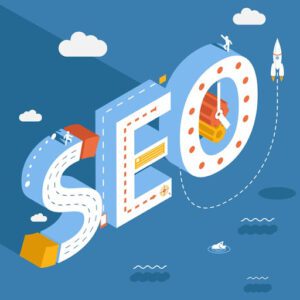
Alt for SEO : SEO graphic illustration
Why is the ALT tag important in SEO?
- Optimize the ALT tag = Optimize the referencing. The keywords of the tag are taken into account and allows Google to contextualize your content.
- Universal search is becoming more and more important, which also helps to generate traffic on Google Images
- For accessibility to The ALT attribute is read verbally by screen readers for visually impaired people
- This content will be displayed if the site is slowed down by any problem
Step 8: The meta title and meta description
After writing your SEO article, it is essential to focus your attention on the On-page SEO. L'Optimizing the meta title is indeed essential to increase your chances of being correctly positioned on search engines. This tag must contain your keyword and your title.
The meta description is intended to describe the content of your article. In search engines, it is found under the title and URL of your page. It should be clear and concise and ideally contain no more or less than 160 characters. The meta description appears with your title and URL on the results page.
Here are some tips to help you attract your reader and to increase the number of clicks on your page :
- Put yourself in the shoes of a user doing a search
- Identify their needs and issues
- Highlight your key arguments in relation to their research
- Don't neglect punctuation to reinforce your title
- Use the online tool Meta Tags to write and view your meta or directly from your site using an SEO plugin

Meta data from the blog post you are reading, inserted with Rank Math
Conclusion
SEO is a game: getting an article to rank in the top results of Google for a given query (keyword) can be both exciting and hair-raising! What you need to know:
- No one can promise you the first page of Google, not even yourself: your results depend not only on you and the work you do, but also on the changing algorithms and the competition.
- If your competitors are looking to rank for the same keyword or long tail query as you and are doing more work, they will invariably come back ahead of you in the search engine results.
- An article or a page is rarely optimized at 100 %.
- You can regularly come back to your contents to update them according to the year, the evolutions, your discoveries and learnings... Google likes fresh content!
Ready to write like a pro and get your content ranked in search engines?
If you wish to delegate SEO to an expertdo not hesitate to contact us ! We offer you a free 30 minute call to discuss your future together SEO strategy.
This article was co-written with Johanna Moncany of Studio Hojat the time of his mentoring at Flowr Agency.
